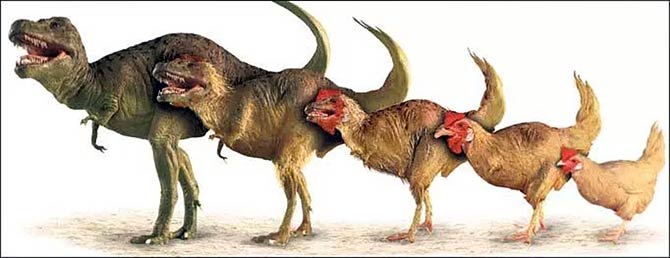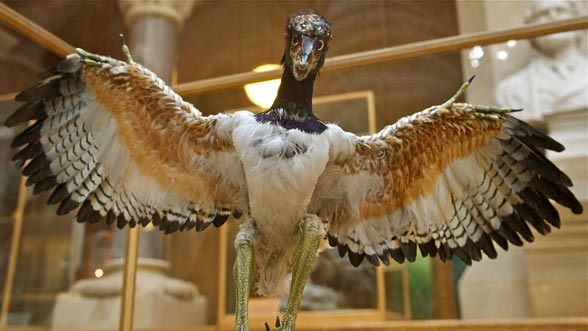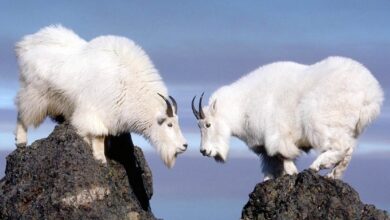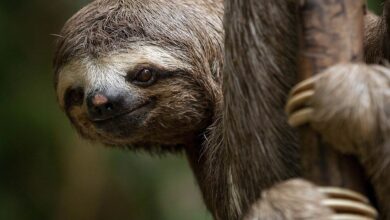From Tyrannosaurus to Chicken: The Evolutionary Journey
The story of evolution is a captivating tale of transformation and survival over millions of years. Among the most intriguing chapters in this story is the evolutionary journey from the mighty Tyrannosaurus rex to the modern chicken (Gallus gallus domesticus). This remarkable journey showcases the incredible adaptability and diversification of life on Earth.
The Age of Dinosaurs
The journey begins in the Mesozoic Era, a period spanning from about 252 to 66 million years ago, often referred to as the “Age of Dinosaurs.” This era is divided into three periods: the Triassic, Jurassic, and Cretaceous. It was during the Triassic period, approximately 230 million years ago, that the first dinosaurs appeared. These early dinosaurs were relatively small and bipedal, but they quickly diversified and evolved into a wide array of forms, dominating terrestrial ecosystems.

Triassic Period (252-201 million years ago)
The Triassic period marked the dawn of the dinosaurs. Early dinosaurs like Eoraptor and Herrerasaurus roamed the Earth, characterized by their small size and bipedal stance. These early species laid the groundwork for the incredible diversity of dinosaurs that would follow.
Jurassic Period (201-145 million years ago)
The Jurassic period saw the rise of some of the most iconic dinosaurs, including the long-necked sauropods like Brachiosaurus and Diplodocus, and the fearsome carnivores like Allosaurus. This period also witnessed the emergence of the first birds, as evidenced by fossils like Archaeopteryx, bridging the gap between dinosaurs and avians.
Cretaceous Period (145-66 million years ago)
The Cretaceous period is perhaps the most well-known era of dinosaur history, culminating in the reign of the mighty Tyrannosaurus rex. The T. rex lived during the late Cretaceous period, around 68 to 66 million years ago. This apex predator was one of the largest land carnivores ever to exist, measuring up to 12 meters (39 feet) in length and standing about 4 meters (13 feet) tall at the hips.

Tyrannosaurus rex: The Apex Predator
The Tyrannosaurus rex, whose name means “tyrant lizard king,” was a fearsome predator. Its massive skull, measuring up to 1.5 meters (5 feet) in length, housed powerful jaws filled with serrated teeth, some of which were up to 30 centimeters (12 inches) long. These teeth were not only designed to tear flesh but were also capable of crushing bone, suggesting that T. rex could feed on a wide variety of prey.
T. rex’s physical build was equally imposing. It had a robust, muscular body supported by strong hind limbs, which allowed it to move quickly and powerfully despite its massive size.
One of the most fascinating aspects of T. rex is its sensory capabilities. Research indicates that T. rex had excellent vision and a highly developed sense of smell, which would have made it an effective hunter. The structure of its brain suggests that it had keen spatial awareness and problem-solving abilities, further enhancing its predatory skills.

Ecological Impact and Behavior
The T. rex lived in a diverse ecosystem alongside other large dinosaurs such as Triceratops, Ankylosaurus, and Edmontosaurus. As a top predator, T. rex played a crucial role in maintaining the balance of its ecosystem. It likely preyed on large herbivorous dinosaurs, keeping their populations in check and influencing the evolutionary pressures on prey species.
Behaviorally, there is evidence to suggest that T. rex may have engaged in complex social behaviors. Some paleontologists propose that they may have hunted in packs or engaged in cooperative behavior, although this is still a subject of ongoing research and debate.

The End of an Era
The reign of the dinosaurs, including T. rex, came to a dramatic end around 66 million years ago due to a mass extinction event likely caused by a combination of volcanic activity, climate change, and a catastrophic asteroid impact. This event wiped out nearly 75% of all Earth’s species, including all non-avian dinosaurs, paving the way for the rise of mammals and eventually, the evolution of humans.
The Age of Dinosaurs set the stage for the incredible evolutionary journey that would follow, leading from mighty giants like T. rex to the diverse array of birds we see today, including the humble chicken. This journey is a testament to the dynamic and ever-changing nature of life on Earth.
The Rise of Birds
The evolutionary link between dinosaurs and birds was first proposed in the 19th century, but it wasn’t until the discovery of feathered dinosaur fossils that this theory gained substantial support. The most famous of these transitional fossils is Archaeopteryx, which lived around 150 million years ago during the late Jurassic period. Archaeopteryx had both avian and reptilian features, such as feathers, a wishbone, and teeth, providing crucial evidence for the dinosaur-bird connection.
Feathers likely evolved initially for insulation and display before being adapted for flight. Over millions of years, various lineages of small theropod dinosaurs, including the dromaeosaurs and troodontids, evolved increasingly bird-like characteristics. These included lightweight bones, a keeled sternum for muscle attachment, and more efficient respiratory systems.

Archaeopteryx: The First Bird
Archaeopteryx, often regarded as the “first bird,” lived around 150 million years ago during the late Jurassic period. Discovered in 1861 in Bavaria, Germany, its fossils provide critical evidence of the evolutionary link between non-avian dinosaurs and birds.
Physical Characteristics
Archaeopteryx possessed a unique blend of traits:
- Feathers: It had well-developed, asymmetrical flight feathers on its wings and tail, similar to modern birds.
- Skull and Teeth: Unlike birds, it had a full set of sharp teeth, suggesting a diet of small animals and insects.
- Skeleton: It featured a long bony tail, three clawed fingers on each wing, and a lightweight, hollow-boned structure.
- Flight Adaptations: It had a wishbone and a lightly built skeleton, crucial for flight, but was likely only capable of short bursts of powered flight or gliding.
Evolutionary Importance
Archaeopteryx is a “transitional fossil” bridging non-avian dinosaurs and birds. It shares many characteristics with theropod dinosaurs, such as:
- Hind Limb Structure: Similar bone arrangement to small theropods.
- Feather Structure: Feathers identical to those of modern birds.
- Bone Structure: Presence of a wishbone and hollow bones, like theropods.
Archaeopteryx in Context
Archaeopteryx lived during a time when small theropod dinosaurs were evolving flight adaptations. It exemplifies the evolutionary transition, blending avian and dinosaur traits. Other feathered dinosaur fossils, like Microraptor, show that feathers and flight-related adaptations were common among theropods, highlighting the deep evolutionary roots of birds.
Archaeopteryx remains a key fossil in evolutionary studies, illustrating the gradual change from non-avian dinosaurs to birds. Its unique features provide insight into the complex pathways of evolution, underscoring the interconnected history of life on Earth.

From Dinosaurs to Modern Birds
The extinction event at the end of the Cretaceous period, around 66 million years ago, marked the end of the non-avian dinosaurs but spared their avian descendants. The survival of these early birds set the stage for a remarkable evolutionary radiation. They diversified into numerous species, adapting to a wide range of ecological niches. Some of these early birds evolved into the ancestors of modern birds, including the lineage that would eventually lead to chickens.
The Chicken’s Ancestors
The domesticated chicken traces its ancestry to the wild junglefowl of Southeast Asia. The red junglefowl (Gallus gallus) is particularly significant in this regard. Evidence suggests that domestication of junglefowl began around 8,000 years ago, primarily for meat and eggs. Selective breeding over millennia has resulted in the variety of chicken breeds we see today.
Evolutionary Adaptations
Throughout their evolutionary journey, the descendants of theropod dinosaurs underwent significant adaptations. For instance, the development of a beak replaced the need for teeth, making the skull lighter and more efficient for various feeding strategies. The transition from a long, bony tail to a pygostyle – a fused set of tail vertebrae – allowed for better balance and maneuverability in flight.
Furthermore, the evolution of a complex vocal apparatus enabled birds to produce a wide range of sounds for communication, which is particularly evident in modern chickens’ diverse calls and clucks. The digestive system of birds also became highly specialized, with a crop for storage and a gizzard for grinding food, allowing them to exploit a wide range of dietary sources.

Conclusion
The evolutionary journey from Tyrannosaurus rex to the modern chicken is a testament to the power of natural selection and adaptation. It highlights the intricate connections between species and the dynamic nature of evolution. From the towering predator of the Cretaceous to the familiar fowl of our farms, this journey encapsulates the profound transformations that life on Earth can undergo over millions of years. Through studying this evolutionary pathway, we gain a deeper appreciation for the complexity and resilience of life.

Discussion / Podcast: From Tyrannosaurus to chicken
Let’s listen to a discussion about the evolutionary journey from Tyrannosaurus rex to the modern chicken.
Recommended
- Triassic Period
- Megalosaurus
- The Bone wars
- Tyrannosaurs – Birth, Reign and Twilight
- Mary Anning
- Alamosaurus – one of the largest dinosaurs
- The longest dinosaurs. Sauropods Top 10
- The heaviest dinosaurs – Top 10
- The longest predatory dinosaurs. Theropods Top 10
- The heaviest predatory dinosaurs Top 10
- The longest Ornithischians (Ornithischia) TOP 10
- The heaviest Ornithischians Top 10
- The largest raptors (dromaeosaurs) Top 10
- The heaviest Dromaeosaurids / dromaeosaurs – Top 10
- The longest Ankylosaurus Top 10
- The heaviest Ankylosaurus Top 10
- The longest ceratopsians
- The heaviest ceratopsians
- The longest and largest ornithopods
- The heaviest ornithopods Top 10
- The longest Stegosaurians (Stegosauria) TOP 10
- The heaviest Stegosaurians (Stegosauria) Top 10
- The smallest sauropods Top 10
- The smallest dinosaurs Top 10
- The largest pterosaurs Top 10
- Dinosaurs
- Dinosaurs database
- Predatory dinosaurs


















